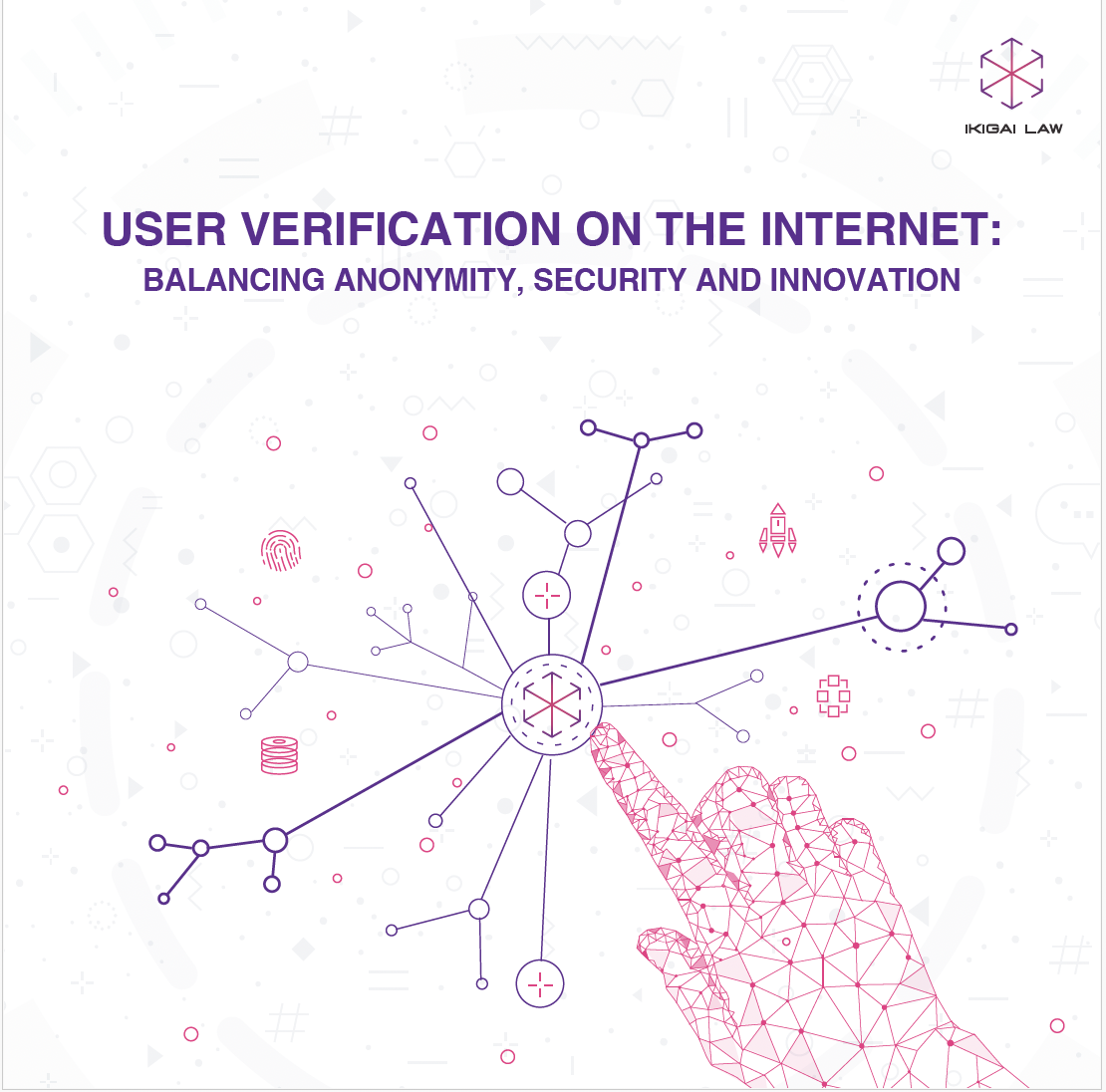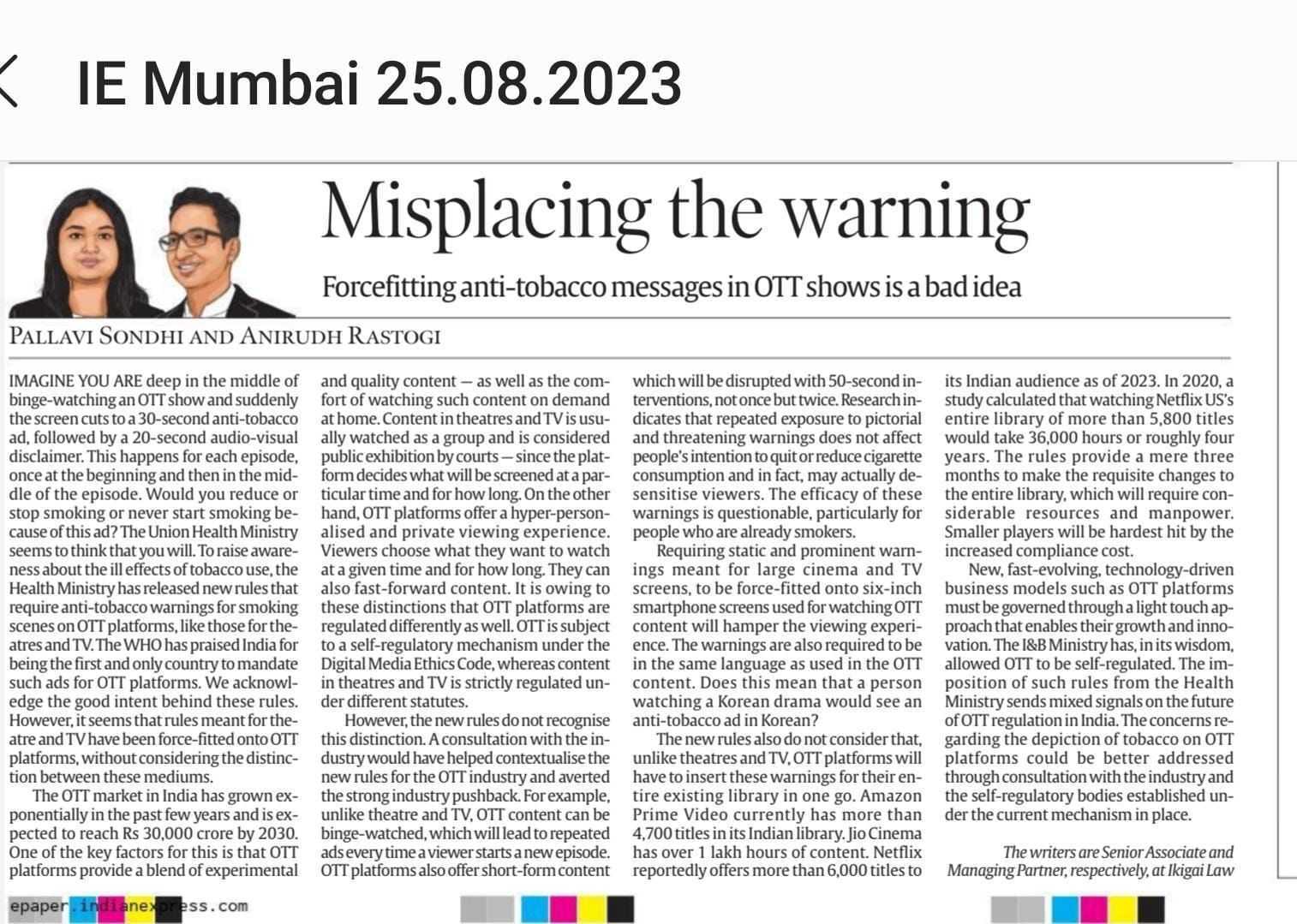Background
Over the last two decades, electronic commerce (e-commerce) provisions in free trade agreements (FTAs) have gained prominence. This is mainly due to the slow moving discussions on e-commerce at the World Trade Organisation (WTO) in which, after two decades of discussions, Members have now agreed to initiate negotiations on a plurilateral e-commerce framework.[1] In the interim, the FTAs have given countries a platform to engage in digital trade as well as to choose the standard of commitments suitable to them. A brief overview of the increasing scope of e-commerce chapters in FTAs is captured below:
| Year | Particulars of FTAs |
| 2001 | The New Zealand-Singapore Closer Economic Partnership was the first FTA to have an e-commerce provision recognising paperless trading.[2] |
| 2003 | The Singapore-Australia FTA was the first to have an elaborate e-commerce chapter with provisions on customs duties, data protection, consumer protection, among others.[3] |
| 2004 | The United States (US) entered into its first FTAs with e-commerce provisions, namely the US-Singapore FTA and the US-Chile FTA. |
| 2006 | Other countries such as Thailand and Republic of Korea (Korea) followed suit, entering into FTAs with Australia and Singapore respectively.[4] |
| 2006 | Notably, India, which is against the inclusion of e-commerce provisions, entered into a Comprehensive Economic Cooperation Agreement with Singapore in 2006 with its own e-commerce chapter.[5] |
| 2008 | EU entered into its first FTA with e-commerce provisions with the CARIFORUM states.[6] |
| 2015 | Even China, which is opposed to extensive e-commerce provisions, entered into an FTA with Korea in 2015 with limited e-commerce provisions. |
| 2016 | The first FTA between two developing countries with an e-commerce chapter was signed between Costa Rice and Columbia. |
| 2019 | Over 78 FTAs have e-commerce provisions.[7] |
Over the years, different FTAs have set different standards of commitments, creating multiple parallel e-commerce regimes. Overall, there are four differing approaches that emerge from e-commerce chapters in FTAs:
- Highly liberalized approach: A few recent FTAs like the Singapore-Australia FTA, the Comprehensive and Progressive Agreement for Trans-Pacific Partnership (CPTPP) and the US-Canada-Mexico Agreement (USMCA) have e-commerce provisions with the highest standards of liberalisation.
- Minimalist approach: Conversely, the Regional Comprehensive Economic Partnership (RCEP), to which China is a party, has adopted a more minimalist regime skirting issues such as market access, non-discrimination and data flows.[8]
- Neutral approach: EU’s FTAs fall between TPP and the RCEP, with stronger commitments than the RCEP.[9] For instance, EU’s FTAs gives greater importance to issues of data privacy and data protection, compared to the RCEP.
- China’s approach:China’s bilateral FTAs generally aligns with its domestic laws. They usually do not include extensive provisions on e-commerce and have weak protections for norms such as consumers protection and data privacy.[10]
We have analysed the first three approaches in the section below.
Comparative analysis of e-commerce provisions in FTAs
We undertook a comparative analysis of the e-commerce provisions of the three most prominent FTAs: the Comprehensive and Progressive Agreement for Trans-Pacific Partnership (CPTPP), the Regional Comprehensive Economic Partnership (RCEP) and the EU-Japan FTA. These three agreements are important as they cover a large geographical area, include major economies as parties and have differing level of commitments. For our analysis, we have chosen a few prominent issues: customs duties; cross-border data flow; protection of personal data and privacy; data localisation; and prohibition on disclosure of source code. These issues have become critical to the plurilateral e-commerce discussions at the WTO and Members have failed to achieve a consensus on many of these issues. [11] An overview of the issues under each FTA is set out below:
| Provisions | CPTPP | EU-Japan FTA | RCEP |
| Non-imposition of customs duties | Prohibits customs duties on electronic transmissions | Prohibits customs duties on electronic transmissions | Prohibits customs duties on electronic transmissions. Allows Members to adjust this provision based on the outcome under the WTO’s work programme on electronic commerce.[12] |
| Cross-border transfer of information | Allows cross-border transfer of information by electronic means. Excludes financial services and service suppliers from the ambit. | Adopts an adequacy decision under which EU and Japan’s domestic law applies. | Allows cross-border transfer of information by electronic means. Gives parties indisputable right to adopt measures for protecting their essential security interests. |
| Protection of personal data and privacy | Obligates parties to adopt a legal framework to protect personal information. | Adequacy decision regulates data privacy and protection. | Obligates parties to adopt a legal framework to protect personal information. |
| Data localization | Prohibits parties from requiring the use of or locating of computing facilities in that party’s territory. | Specific provision absent. Adequacy decision does not require specific authorization for data transfer from EU to Japan. | Prohibits parties from requiring the use of or locating of computing facilities in that party’s territory. Gives parties indisputable right to adopt measures for protecting their essential security interests. |
| Prohibition on disclosure of source code | Prohibits parties from requiring the transfer of, or access to, the source code of software. | Prohibits parties from requiring the transfer of, or access to, the source code of software. | Provision absent. |
The detailed white paper analysing the e-commerce provisions of the three FTAs can be accessed here.
Conclusion
It is evident from our analysis that significant challenges exist before a coherent plurilateral framework can be established. The CPTPP, RCEP and the EU-Japan FTA reflect many points of convergences as well as divergences which can be useful for a plurilateral framework on e-commerce in the future.:
- The disparities between Members on data related issues poses the greatest challenge for a potential plurilateral e-commerce framework. The US is demanding minimal restrictions on issues of data flow and data privacy, as reflected in the CPTPP. Whereas China is supporting an exclusion of any WTO commitments on such issues or the indisputable right to adopt measures in the interests of security, as reflected in the RCEP. Since the plurilateral negotiations have already alienated many DCs and most LDCs, it might be in the interest of Members to try and find a middle ground on issues of data to make progress towards a future e-commerce framework.
- The EU-Japan FTA could be a point of convergence for the plurilateral e-commerce negotiations. The CPTPP’s approach, which reflects the highest standard of liberalisation especially on data localisation and data privacy, may not be acceptable to countries like China which has constantly pressed for regulatory freedom on such issues. On the other end of the spectrum, the US or the EU may never agree to an RCEP approach due to weaker commitments on issues of customs duties, data flow and a completely absent obligation on the issue of source code. The EU-Japan FTA reflects a neutral ground as it focusses on engaging with Members’ domestic regulatory policies on data flow and data protection. Simultaneously, it ensures that that there is no dilution of obligations on market access. Countries like China may show more willingness to engage on such terms. While this may pose initial hiccups, especially for developing countries without strong domestic data protection norms, it could be an acceptable solution for most Members.
- Many developing countries like China and Côte d’Ivoire have argued for more inclusive negotiations on e-commerce to accommodate the needs of DCs and LDCs.[13] The RCEP, which includes many smaller South Asian DCs and LDCs, reflects the standard of commitments acceptable to these countries to some extent. The RCEP also provides a longer timeframe to smaller economies to fulfil the e-commerce commitments. Therefore, Members to the plurilateral negotiations should encourage dialogue with smaller DCs and LDCs and explore provisions on special and differential treatment on various issues.
There remains a long way to go before a plurilateral e-commerce framework can be established. Until then, FTAs may continue to act as the main platform for countries to engage in digital trade.
This piece has been authored by Kruthi Venkatesh, a consultant working with Ikigai Law, with inputs from Nehaa Chaudhari, Director (Public Policy), Ikigai Law. For more on the topic, please reach out to us at contact@ikigailaw.com
The white paper on this piece can be accessed here.
For other articles in this series, please see here.
[1] For more context, please see our first piece in the series titled ‘E-commerce Related Discourse at the WTO: Brief History and Subsequent Developments’, here.
[2] See Agreement between New Zealand and Singapore on a Closer Economic Partnership, 1st January, 2001, available at,https://wits.worldbank.org/GPTAD/PDF/archive/NewZealand-Singapore.pdf.
[3] See Singapore-Australia Free Trade Agreement, 17th February, 2003, available at, https://wits.worldbank.org/GPTAD/PDF/archive/Singapore-Australia.pdf.
[4] See Korea-Singapore Free Trade Agreement, 2nd March, 2006, available at, https://www.enterprisesg.gov.sg/-/media/esg/files/non-financial-assistance/for-companies/free-trade-agreements/korea-singapore-fta/legal-text/ksfta20legal20text1.pdf; Thailand-Australia Free Trade Agreement, 1st January, 2005, available at, https://www.wipo.int/edocs/lexdocs/treaties/en/au-th/trt_au_th.pdf.
[5] See Singapore-India Comprehensive Economic Cooperation Agreement (the agreement does not grant the Most Favoured Nation status and the National Treatment for digital products), available at, https://dot.gov.in/sites/default/files/India%20Singapore%20CECA%2001.08.2005.pdf.
[6] See EU-CARIFORUM Economic Partnership Agreement, available at, https://ec.europa.eu/world/agreements/downloadFile.do?fullText=yes&treatyTransId=12969.
[7] Marc D. Froese, Digital Trade and Dispute Settlement in RTAs: An Evolving Standard, J. World Trade, (Sept., 2019), available at, https://poseidon01.ssrn.com/delivery.php?ID=003089126006010097103091002111109076041005046053051061071097115004024078027075071009124023057017126029014126071065025004031093058039007032031094025030007080028019071020052091096070106125086101088084107101101081096116085103077006116074026106091099114&EXT=pdf (hereafter, Marc D. Froese, Digital Trade and Dispute Settlement in RTAs) (last accessed on 29th June, 2020).
[8] Ciuriak, Dan, and Maria Ptashkina, The Digital Transformation of International Trade, Interamerican Development Bank and International Centre for Trade and Sustainable Development, at 15 (2018), available at, http://e15initiative.org/wp-content/uploads/2015/09/RTA-Exchange-Digital-Trade-Ciuriak-and-Ptashkina-Final.pdf (hereafter, Ciuriak & Ptashkina, The Digital Transformation of International Trade) (last accessed on 29th June, 2020).
[9] Ciuriak, Dan, and Maria Ptashkina, The Digital Transformation of International Trade, supra note 9, at 15.
[10] Arpita Mukherjee & Avantika Kapoor, Trade Rules in E-Commerce: WTO and India Working Paper, No. 354, at 21, (Mar., 2018), available at, https://think-asia.org/bitstream/handle/11540/8054/Working_Paper_354.pdf?sequence=1 (last accessed on 29th June, 2020).
[11] For more context, please see our first piece in the series titled E-commerce Related Discourse at the WTO: Brief History and Subsequent Developments’, here.
[12] Through the declaration on global e-commerce adopted by the WTO Members in 1998, they called upon the General Council to establish a comprehensive work programme on e-commerce to examine all trade-related issues concerning e-commerce. The work programme allocated four WTO bodies to examine specific trade-related issues concerning e-commerce, namely the Council for Trade in Services; Council for Trade in Goods; Council for Trade-Related Aspects of Intellectual Property (TRIPS) and the Committee for Trade & Development. Under these bodies and in the General Council, Members have been undertaking discussions on various issues related to e-commerce, including on the issue of prohibition on the imposition of customs duties. For more information, please see our first piece in the series on ‘Digital Trade’ titled E-commerce Related Discourse at the WTO: Brief History and Subsequent Developments’, here.
[13] World Trade Organization, Joint Statement on Electronic Commerce, Communication from China, INF/ECOM/19 (24th Apr., 2019), available at, https://docs.wto.org/dol2fe/Pages/FE_Search/DDFDocuments/253560/q/INF/ECOM/19.pdf; World Trade Organization, Joint Statement on Electronic Commerce, Communication from Côte d’Ivoire, INF/ECOM/49 (16th Dec., 2019), available at, https://webcache.googleusercontent.com/search?q=cache:QrDwBQIXzysJ:https://docs.wto.org/dol2fe/Pages/SS/directdoc.aspx%3Ffilename%3Dq:/INF/ECOM/49.pdf+&cd=1&hl=en&ct=clnk&gl=in.










